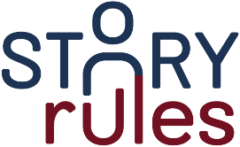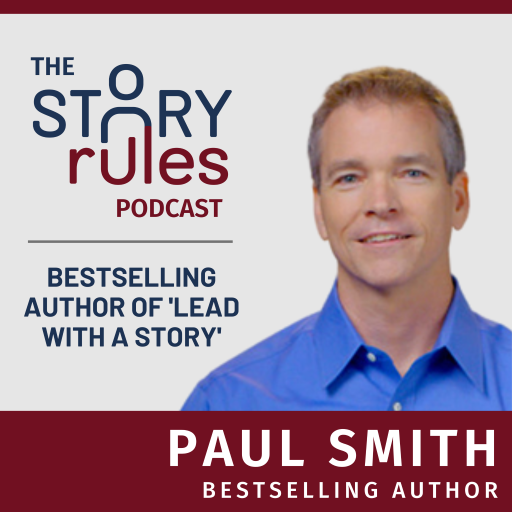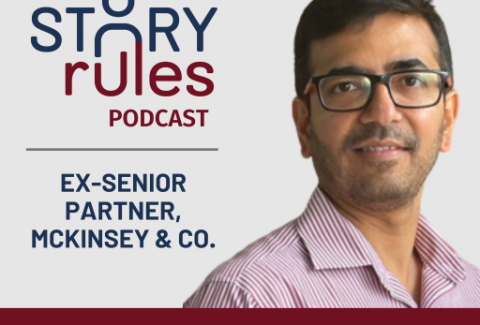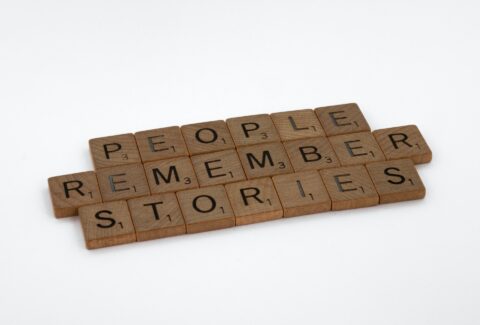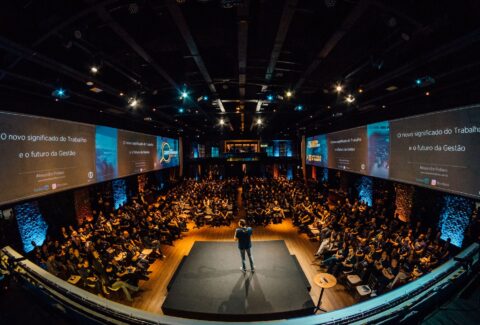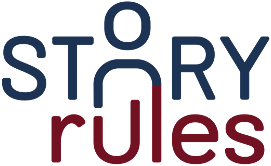E18: Paul Smith – Bestselling author of books on storytelling
I know, I know – it’s been ages since the last episode of the podcast. But the way I’m looking at this initiative is that I’m building these knowledge assets for the long term. More than a regular cadence, I’m just looking to create a base of content that is valuable and timeless.
Meanwhile, I’m excited to release the next episode of my podcast – with Paul Smith.
Paul Smith is the bestselling author of books such as ‘Lead with a Story’, ‘Sell with a Story’ and ‘The 10 Stories Great Leaders Tell’.
Paul specialises in what I term as ‘human stories’ – which is narrating specific incidents from work and life that contain valuable lessons or insights.
Through his books, Paul teaches us how to use such incident stories to lead better and to sell better.
Now, you might think that the ability to narrate incident stories is a God-given one – you either have it or you don’t. But reading Paul’s books gives you the clarity and confidence that this is very much a learnable skill.
Look, I get it. As a skill, storytelling may seem esoteric, mysterious and difficult to break down into component parts.
But it is possible to do that… and of the many books I’ve read on the topic, Paul’s books are perhaps the best at achieving a neat, structured breakdown of this craft.
In this short but insight-filled podcast episode:
- Paul talks about his life journey and how he used a mix of thinking clarity, determination and sheer hard-work to pivot his career from the corporate world to the world of storytelling
- He also shares some great story examples that you can use immediately at your work. For instance:
- He narrates a story of when he made a presentation to P&G’s senior leadership, where instead of telling his findings upfront, he took the audience on a discovery journey and tapped into their curiosity
- He offers ideas on how to elicit stories from your clients and other counterparts
- Paul also mentions when should you use elaborate storytelling techniques vs just share the information requested
- Finally he surprised me with what is he currently upto (you will find it hard to believe) and how he plans to ‘go for the stars’ in his latest innings.
It has been a privilege for me to have such an accomplished author and storyteller on the podcast. I hope you find the conversation as insightful as I did.
PS: I’d have loved to have a longer conversation, but Paul only had about 40 minutes available. Still, 40 minutes is better than none!
As always, I’m sharing some some lightly-edited extracts from the conversation – tagged under ‘the 3Ps’ – the Personal, Philosophical and the Practical (all emphasis mine):
1. Personal:
a. Keep looking for your Ikigai 🙂
Paul was at a senior position at P&G and had a great corporate life going. But he was still looking for what makes him tick.
Ravi: May I ask what the trigger was, Paul, for you to realize that storytelling is a critical skill (and you want to specialise in it)?
Paul: There were probably two things – one, at that point I started to have just enough access to the senior management of the company. I was mid-way up the hierarchy myself, so you ended up spending a little bit of time in a C-suite with some of those officers. I just started noticing their behaviour exemplified some good storytelling. But the other reason was just very practical, honestly, and perhaps even selfish. About that time, I started asking myself, “Here I am, 15 years into this company. Do I want to spend another 15 years here? Or do I want to do something different? What do I want to do here?”
And I decided that what I really liked – the best part of my job was the few days a year that I got to teach a new hire Training class, or a new General Manager training class, or speak at the annual company meeting or something. That’s the part of my job I loved the most, and it was like 5% of my job! What could I do to make that all of my job? Turns out, there wasn’t any job at the whole company that was doing that full time. And I realized that the only people I know that get to do that are these guys that have written some best-selling book and they get to travel around the world talking about the book. I said, “Well, I guess that’s what I gotta do. What am I interested in enough to write a whole book about?” And I thought, storytelling; this thing that I realized I don’t know enough about. Then it became more purposeful; (I thought) “I want to learn this not just to learn this, I want to learn this because I want to write a book about it and completely change my career path” and it ended up working. It didn’t have to, but I got lucky enough.
2. The Philosophical:
a. There’s no shortcut to perseverance
Paul is fairly risk averse and did not just leave his job to “follow his passion”. Here’s how he wrote his first book (Lead with a Story):
Paul: I wrote my entire first book while I still had a full-time job at P&G. The reason was because I didn’t know if it would work. I’d love to tell you some romantic story of how I woke up one morning and decided that I was going to do this, so I walked into my boss’ office and I quit my job, then I went out and started this. But, I’m reasonable and maybe just too risk-averse to do something like that.
I dedicated probably 1 hour a day, and 5 hours on the weekend every week, for a couple of years while I was still working at P&G, to research and write that first book, out of the 5 books I’ve written. And then I still waited until 6 months after the first book came out before I left the company, because – like you said, it was an experiment. I was running my own market research to see if it would work; if enough people would read the book and call me to generate the speaking engagements and training courses that I (envisioned); to see a sustainable business model. After the first 6 months once the book came out, I used up all my vacation time doing these training courses and speaking engagements. I ended up asking for a reduced work schedule, because I ran out of vacation time which really upset my wife – that was no good! Once I spent all of those days, I realized that this is meeting my success criteria. By that time, the book was already into its third printing after 6 months, so I could see that there was a sustainable business model there.
Paul’s story about finding an agent and publisher is also very inspiring:
Paul: The biggest difficulty I found was actually finding an agent and getting a publisher. The first seven agents I sent my proposal to, told me, “No.” One at a time, I wrote a lengthy proposal, sent it to an agent, they said, “No. Your idea is not good enough.”
The way it works in this business is, it’s not like you can just hire an agent like you can hire a lawyer or a doctor, you know? You don’t just walk in and say, “Here’s my money, I want to hire you.” They only get paid if your book gets published. So, they take you on a contingency. They’re very motivated to not take on a client if they think that client’s book is not going to get published, because they’ll waste their time and not get paid at all. The first seven I sent it to told me no, and I easily could have given up after the first one, or two, or three, or four. But the eighth one told me “Yes”; the eighth one took me as a client. She put together a list, “Here are the seven or eight different publishers I want to send this to.” The first one she sent it to wrote me a contract. My batting average with agents was one out of eight, but my batting average with publishers was 100%.
And there’s a reason for that, and that’s because each of the seven that turned me down gave me ideas to make it better. They didn’t just say, “No.” I’d write them back and say, “Okay, I get it, you don’t want to take me. But tell me why. What’s wrong with my proposal?” “Oh, it’s not a big enough idea,” “It’s not broad enough,” “You’re not planning on interviewing enough people,” “You’ve interviewed too many people” They gave me ideas.
In fact, the seventh one assigned me a junior member of her team, and said, “I want you to go work with her for a few months to make this much better.” Every week, I would meet with her and took up a lot of time, (I got) a lot of her ideas and (we went) back and forth with the proposal and changes, changes, changes, changes. And then after three months, we sent it back to the boss at the agency. And he said, “I still don’t like it enough, I’m not going to take you.” So, it wasted three months of her time which I did not pay for at all, but made the proposal so much better. And then that’s the proposal that I sent to the eighth agent and she said, “Oh, I love this. I’ll take it.”
So, you can do it, but it takes some perseverance
b. To convince your audience, make them an offer they cannot refuse!
The USP of Paul’s first book? He personally interviewed 300 CEOs and executives across 25 countries!
How did he convince them for the interview? Here’s his secret:
Ravi: …how easy, or difficult, was it at the beginning, especially, when you’re going to approach a CEO and saying, “I want to talk to you about Storytelling.”?
Paul: That’s a great question. You might imagine me asking a bunch of these CEOs I’d never heard of – who had never heard of me – just saying no. But here’s the secret. One thing you mentioned, yes, I spent many years in P&G and consumer research, so I knew my way around an interview and how to ask questions and getting people to answer them well, and things like that. But getting the interview…Here was the secret: Imagine, Ravi, that you didn’t know me. (You’ve) never heard of me, and I wrote you an email and I said, “Hey, you don’t know me. My name is Paul Smith. I’ve always wanted to write a book. I want to interview some CEOs; I hope my book is published. Would you spend an hour with me on the phone?”
What would you probably say?
Ravi: I don’t have the time for that.
Paul: Exactly! You don’t have the time for that. But imagine if instead, I said – and this is what I actually said – “Hey, Ravi, I know you don’t know me, my name is Paul Smith. But I’ve got a contract with the American Management Association, division Harper Collins Publishing, to write a book on leadership. It’s going to be published next fall. And I’m looking for strong leaders and successful companies to feature in the book. Would you be interested in interviewing with me?”
Well, now what would you say?
Ravi: Incredible. Yeah, I’m in!
Paul: Because it’s not like it’s just a pipe dream. This guy’s got a contract with a publisher – the book’s going to be published whether you are in it or not, it’s going to get published. Now, your motivation to say yes is much higher. I literally had a 93% success rate getting CEOs to interview with me; only 7% said no. And I’m convinced the reason was because I didn’t ask them until after I had a publishing contract.
c. When telling a data story, consider taking your audience on a discovery journey
Paul narrates this fascinating story about his most successful presentation at P&G:
Paul: …around the year 2000. I think I was still at P&G, working on the diaper business. I was investigating this one hypothesis that if you build your sales volume, profits will follow. And I was investigating that because that’s what every P&G Brand Manager is taught the day they get there – you grow sales, market share and profits will work themselves out. I wanted to know if that was true. So, I pulled all the data – I was a finance guy, like you used to be, and still had access to the data so I pulled it. We had 40 years of history in the diaper business; I pulled out 40 years of data. And what I found was that in the first half of that, (in the) first 20 years, there was an almost perfect correlation between sales and profits, exactly like we’d been taught. But for the second 20 years, there was almost no correlation whatsoever. It was very close to zero. The picture of it looks like a scatter plot – there was no direction to it. And that was fascinating, which led me to some conclusions, which led me to some recommendations that I wanted to make to the leadership team. And when I did, what they expected me to do, of course, was walk in there and say, “Hey, here’s my recommendation, I think we should change our strategy to do this and this, and here are all my reasons why.” Because that’s how we’re taught to make a recommendation: (you) put your recommendation up front, and then you justify it with all your analysis. But I didn’t do that.
I tried something different, because it was my first time in front of the President and the leadership team. Everybody always does these things the same way and I just thought that was boring. I was taking a risk and doing something different, but I had no real indication that it would work, but it did. So, instead of doing it the normal way, I showed them the chart that I just described to you. Showing this near perfect line for 20 years, and then there is just no correlation whatsoever. And I told them, “I’ve been researching this and investigating it for weeks. Here’s what I found,” but then, I stopped. (And) instead of telling them what I concluded from it – and by the way, halfway between the start and the end of those 40 years was 1983. That was the midpoint where the data, the correlation changed – I show them that chart, and I said, “What on earth do you think happened around 1983 that forever changed this relationship between sales and profits?” And I just stopped talking. I let them guess and they started (going), “Oh, that’s when Huggies got bigger than Pampers.”
“Nope, that was years later.”
“Oh, that was when commodity prices got out of control.”
“Nope, that was earlier than that.”
They went through all these wrong answers, which I’d gone through too.
And I said, “No, that’s what I thought too. I went and investigated, and that’s not it.”; “Oh, and I thought one too! It turns out that’s not it.”
Eventually somebody got it, they were like, “Oh, is that maybe when household penetration of diapers reached near 100%, and the market matured?”
“That is it.”
And then I showed them the chart that showed that 1983 was when basically household penetration of diapers reached near 100%. People had stopped using cloth diapers and completely switched over to disposable diapers. And then something amazing happened – what I heard from the audience was, “Ohh!” and then right after that, all of my recommendations started coming out of their mouths. I never drew my conclusions, or made any recommendations, but every one of my recommendations got implemented. It was the most effective presentation (that) I (had) made in the whole 20 years at Procter and Gamble.
3. The Practical
a. Get rid of your alarm clock
Man, I wish I could be able to do this – still grapple with the snooze button every morning!
Paul: I did this years ago and it was one of the best decisions I ever made – I got rid of my alarm clock probably when I was in my mid-thirties. When I was in my mid-thirties, I looked at these people who were retired and I’d ask them, “What’s the best thing about being retired?” and almost all of them said the same thing – “Oh, not having to wake up to an alarm clock and hit snooze over and over again!” Getting out of bed is the worst part of everybody’s day, right? And I thought, “That’s really insightful. Am I going to have to wait 30 years, like most people? Is there a way I could do that?” and it sounds really simple, but I just started going to bed 30 minutes earlier, and then 30 minutes earlier, until I started waking up before my alarm clock. That time turned out to be 10 o’clock at night. If I went to bed by 10 o’clock at night, I would wake up before my alarm went off. I thought, “Well, that’s genius.” And I never used my alarm clock again. I got the benefit of retiring in my mid-thirties, even though I still had a job.
Anybody can do it. If you don’t wake up before your alarm clock, your body is telling you that you need more sleep. It’s not rocket science. I’ve had that benefit for a long time now.
And those were some highlights of my podcast episode with Paul Smith, bestselling author of some of the most insightful books on storytelling that I have read.
A few things which stood out for me in the conversation
– The importance of determination and hard work in working on your passion
– The power of curiosity in holding the audience’s attention
– How you can persuade the audience better if you are able to get them to arrive at the recommendations on their own
– The importance of having several stories in your pocket for different work situations – for instance justifying your pricing. Stories can be more engaging and effective than cold, hard logic in those situations!
You can enjoy my conversation with Paul at your favourite podcast location:
Browser
Podcast apps: Apple Podcasts | Spotify | Google Podcasts | Stitcher | Podcast Addict | Pocket Casts
Happy listening!
If you find the content valuable, please rate and review this podcast on iTunes, Spotify, Google Podcasts, or wherever you listen to them (links above). It’ll help others like you discover these insights!
This podcast was hosted by me, Ravishankar Iyer. Audio editing by Kartik Rajan. Transcript creating and editing by Amisha Jha and all-round support by Sanket Aalegaonkar.
Thanks,
Ravi
